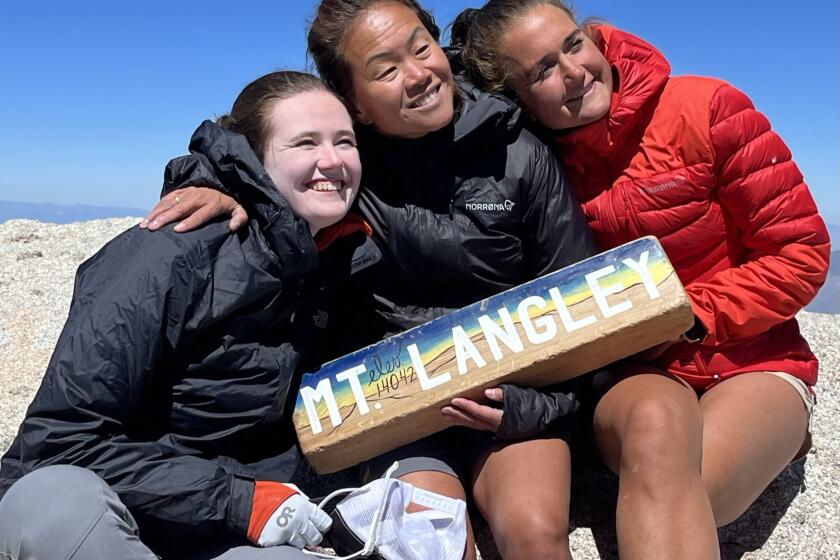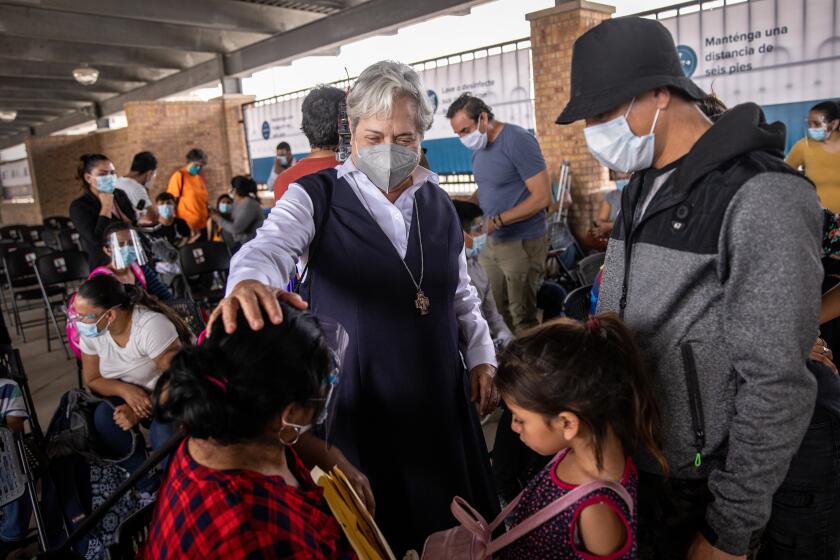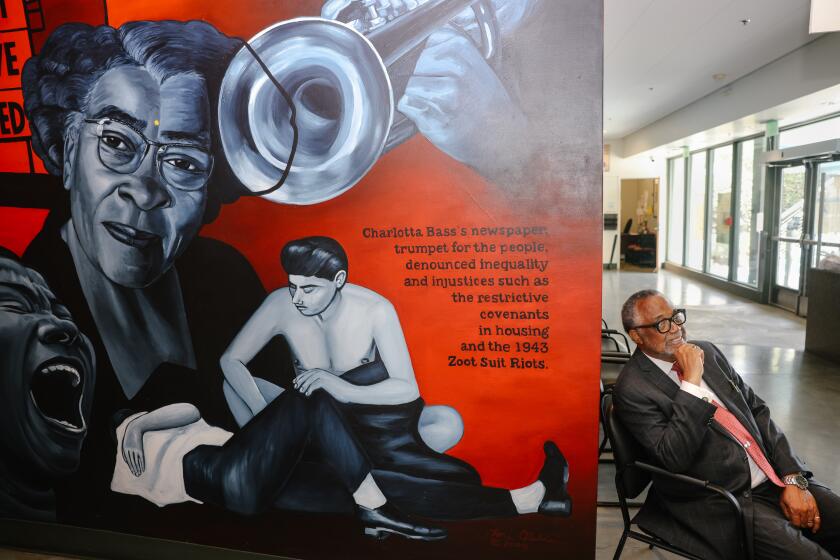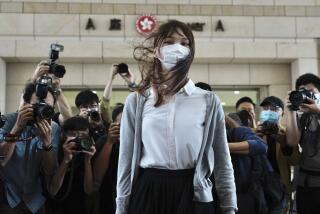As China pushes in, Hong Kong’s first ethnic minority social worker wants a future for everyone
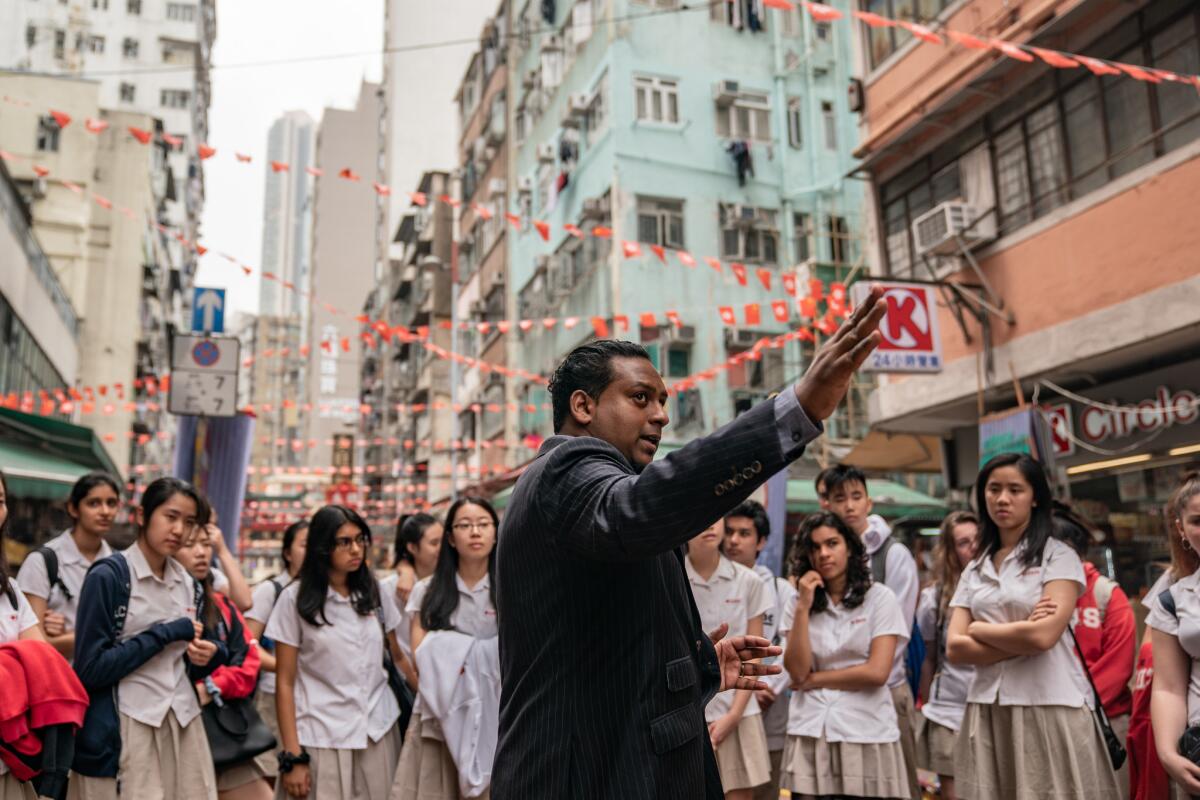
Jeffrey Andrews’ head bobbed up and down as he briskly weaved through the crowds, his bright red cap like a lighthouse in the mist. The 33-year-old waved at the 30 students trailing him, calling in Cantonese: “We’re walking at Hong Kong pace!”
Some of the students’ eyes widened. The Indian guy spoke Cantonese? He even made jokes about being called “acha,” a derogatory Cantonese term for South Asians.
Andrews had just emerged from Chungking Mansions, the famous center of Hong Kong’s non-Chinese, non-Western populations, feared by some for its reputation for drugs and crime, revered by others as the best place around for a good curry. Here, the big banks and sleek business suits of central Hong Kong give way to hawkers and money changers, food stalls and cell-like hostels.
The “mansions” are a labyrinthine block of five buildings, each with its own refrigerator-sized elevator shooting up into narrow, dimly lit towers of tiny rooms. Andrews, a third-generation Hong Konger of Indian descent and the first ethnic minority social worker in the city, runs a center for refugees and asylum seekers on the 17th floor.

This was the world Andrews was showing the students from Hong Kong Open University — a Hong Kong through minority and refugee eyes.
Andrews began leading such tours long before the protests that have rocked Hong Kong this summer, as locals resist Beijing’s attempts to assert more control over the territory. But at the heart of recent unrest lies a question that Andrews’ tours have been asking all along: What does it mean to be a Hong Konger?
For many in the city, especially the younger generation, the answer lies in Hong Kong’s non-Chinese identity. As China pressures Hong Kong to merge more with the mainland, some are embracing minorities and refugees as part of an international city that can be home to all.
Andrews began his tour in the Tsim Sha Tsui neighborhood, where accents buzzed all around: Shanghainese, Korean, English with African or Filipino lilts.
This was Andrews’ turf growing up. Descended from Tamil Christians who left southern India for Hong Kong in the 1960s, when it was still a British colony, Andrews was born and raised here. He felt little connection with India, but also distanced from the mainstream of Hong Kong, where 92% of the population is ethnic Chinese.

Legally, minority residents could go to school and work in Hong Kong. But most, including Andrews, attended segregated schools where minority children didn’t learn Chinese. Without the Chinese reading skills needed for higher education and white-collar jobs, people like him were locked into cheap labor on society’s margins.
As a teenager, Andrews fell into Hong Kong’s triad gangs, roaming the streets until he was arrested one day for stealing a cellphone. At the police station, he stared at a chart on the walls listing the number of crimes committed by non-ethnic Chinese.
“I’m just going to be one of these statistics,” he thought.
A Cantonese social worker, Fermi Wong, bailed Andrews out of jail that night. He got home expecting his parents to yell at him. Instead, they cried.
From that day, Wong became Andrews’ mentor, helping him fight to enter Hong Kong’s education systems, become a licensed social worker and eventually naturalize as a Chinese national with a Hong Kong passport.
Now Andrews gives talks at police stations, schools and corporate events. On tours like this, he advocates for a Hong Kong that provides a future for minorities.
“Minorities are scared to complain because our parents say: ‘Hey, look, this is better than our home countries. Don’t rock the boat,’” Andrews said.
Column One
Column One is a showcase for compelling storytelling from Los Angeles Times.
But his generation wants an equal chance at education, work and inclusion in the city where they were born and raised.
“I’m a local Hong Konger, just with a different skin color,” Andrews said.
The tour’s first stop was Kowloon Masjid, the largest mosque in Hong Kong. None of the students had ever been inside. But they remembered 2016, when Hong Kong’s parliamentary elections threw the topic of asylum seekers, and the mosque, into the spotlight.
As an international business hub, Hong Kong has loose visa requirements. It’s easy for people fleeing Africa, South Asia and the Middle East to enter the city and seek asylum, though the acceptance rate is about 0.6%, one of the lowest in the world.
During the last parliamentary elections, some candidates pointed to that rate to argue that most asylum seekers came here to leech off Hong Kong’s welfare system and steal people’s jobs.
The candidates hung banners in front of the mosque decrying “fake refugees,” as local media ran stories about “South Asians” — no distinction among asylum seekers, migrant workers or residents — committing rapes, thefts and other crime.
As Andrews explained these policies, the students nodded in sympathy, especially when he identified the candidates as part of a conservative, pro-Beijing political party.
One of the tour chaperones said she wasn’t surprised that the students related more to asylum seekers than to China-friendly politicians.
“The invasion of mainland Chinese is making Hong Kong more like China, which most Hong Kong people would never want to see,” she said. “Hong Kong people don’t like mainland Chinese. They’d rather welcome an asylum seeker.”
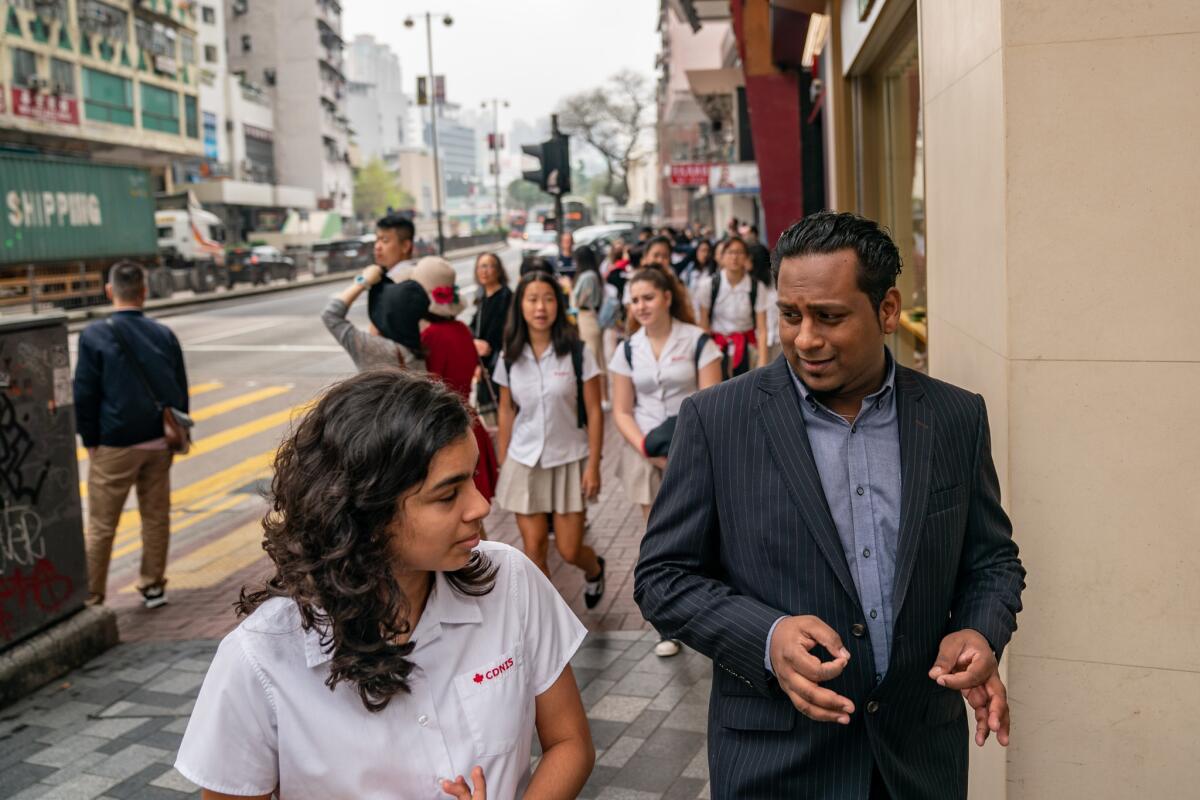
Later, Andrews led the group to Kowloon Union Church, a red brick sanctuary built by British missionaries in the 1930s. In one room, a pastor told students how Vietnamese “boat people” had slept in rows of bunk beds here in the 1970s, seeking refuge after the Vietnam War.
Hong Kong later put Vietnamese refugees in internment camps, before repatriating or sending most off for resettlement in Western countries.
There’s a generation gap in Hong Kongers’ attitudes toward minorities and refugees, said Terence Shum, the anthropology professor who had brought these students on the tour.
“Young people want to fight for their rights, gain independence, have more say in the political system — they’re more willing to embrace people with different cultures,” Shum said. “Older people say foreigners are here to abuse the system, and they should get out.”
The irony of that gap is that many of Hong Kong’s older residents fled from civil war and the communist revolution in mainland China. Between 1945 and 1951, an exodus from the mainland sent Hong Kong’s population rocketing from 600,000 to 2.1 million.

Chris Lin, a 33-year-old Hong Konger who volunteers at the refugee center, was assisting with the tour. His own grandparents came to Hong Kong as refugees, he said.
“Refugees now are also fleeing. Why deny them? Didn’t we go through the same hardship?” he said.
Today’s students don’t talk as much about their families’ origins the way his generation did, Lin said. But they’re more empathetic to asylum seekers, perhaps because of the pressure they feel from mainland China today.
That pressure is currently at a boiling point, as months of protests against a now-suspended extradition bill that would allow deportations of suspected criminals to China have morphed from million-person marches into desperate, bloody clashes with local gangs and police.
For many protesters, the sense of urgency and anger against a government beholden to Beijing rather than to its people first solidified in the Umbrella Movement of 2014, when tens of thousands of youth-led protesters occupied Hong Kong’s streets, demanding freer elections without interference from Beijing.
Five years later, none of the demands have been met; the movement’s leaders have been arrested and banned from public office. But that movement was a turning point for many young Hong Kongers, minorities included.
Andrews remembers watching the police tear-gas the students on TV, then gathering a group of ethnic minority friends to join the protests. They huddled in a subway station with banners prepared, then paused.
What if the Cantonese protesters rejected them? What if they called them acha and hak gwei, “black ghost,” and told them Hong Kong’s future was none of their business?
Andrews took a deep breath and went upstairs. In an instant, the crowds surrounded them. They hugged them, patted them on the back and yelled, “Hong Kongers!” That was the first time Andrews felt he belonged.
The tour ended with in Yau Ma Tei, where a Sri Lankan asylum seeker showed the students her home, a subdivided flat where 20 people shared one toilet, one kitchen and 11 rooms the size of wardrobes.
The students squeezed single-file in and out of her room, speechless. An Urdu radio broadcast played through the walls.
“It’s really a shock to me. If you asked me to stay here for 10 hours, I would panic,” said Arbitor Ma, one of the professors supervising the trip.
One of the youngest students, 18-year-old Patton Leung, said that he’d welcome asylum seekers, calling them a “benefit to society.”
But mainlanders? Some were kind, Leung said, but the sheer numbers — 150 new mainland immigrants come to Hong Kong every day — felt out of control. He called them a “red invasion.”
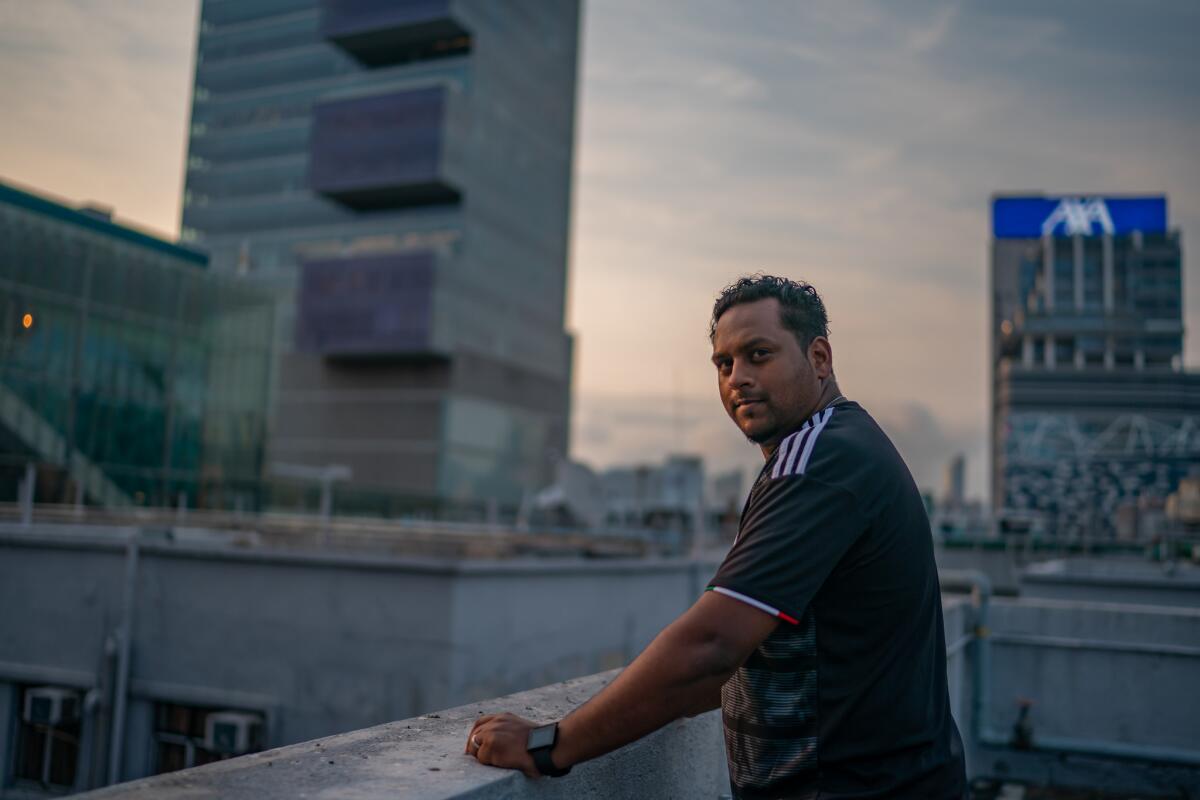
As Andrews looks to Hong Kong’s future, he reflects on an incident from last year, after Typhoon Mangkhut ravaged the city.
One of Andrews’ asylum-seeker friends started a street cleanup. The 23-year-old from Africa, who asked not to disclose his name or country for protection, said he just felt compelled to clear the mess.
“It was just an instinct. Like if you’re living somewhere, you clean your house,” he said.
Soon, a whole group of Africans and South Asians were picking up tree branches, throwing them away.
Andrews helped, too, and he noticed a group of popos, Chinese grandmothers, watching them. They murmured in Cantonese, “So many hak gwei!”
Andrews cringed. When one disappeared, he worried she might call the police.
But then she came back, her arms full of pineapple buns and Vitasoy cartons — classic Hong Kong snacks — and passed them out to the volunteers.
One of the Africans grinned as he drank his first Vitasoy ever. The popo watched him, satisfied.
More to Read
Start your day right
Sign up for Essential California for news, features and recommendations from the L.A. Times and beyond in your inbox six days a week.
You may occasionally receive promotional content from the Los Angeles Times.
